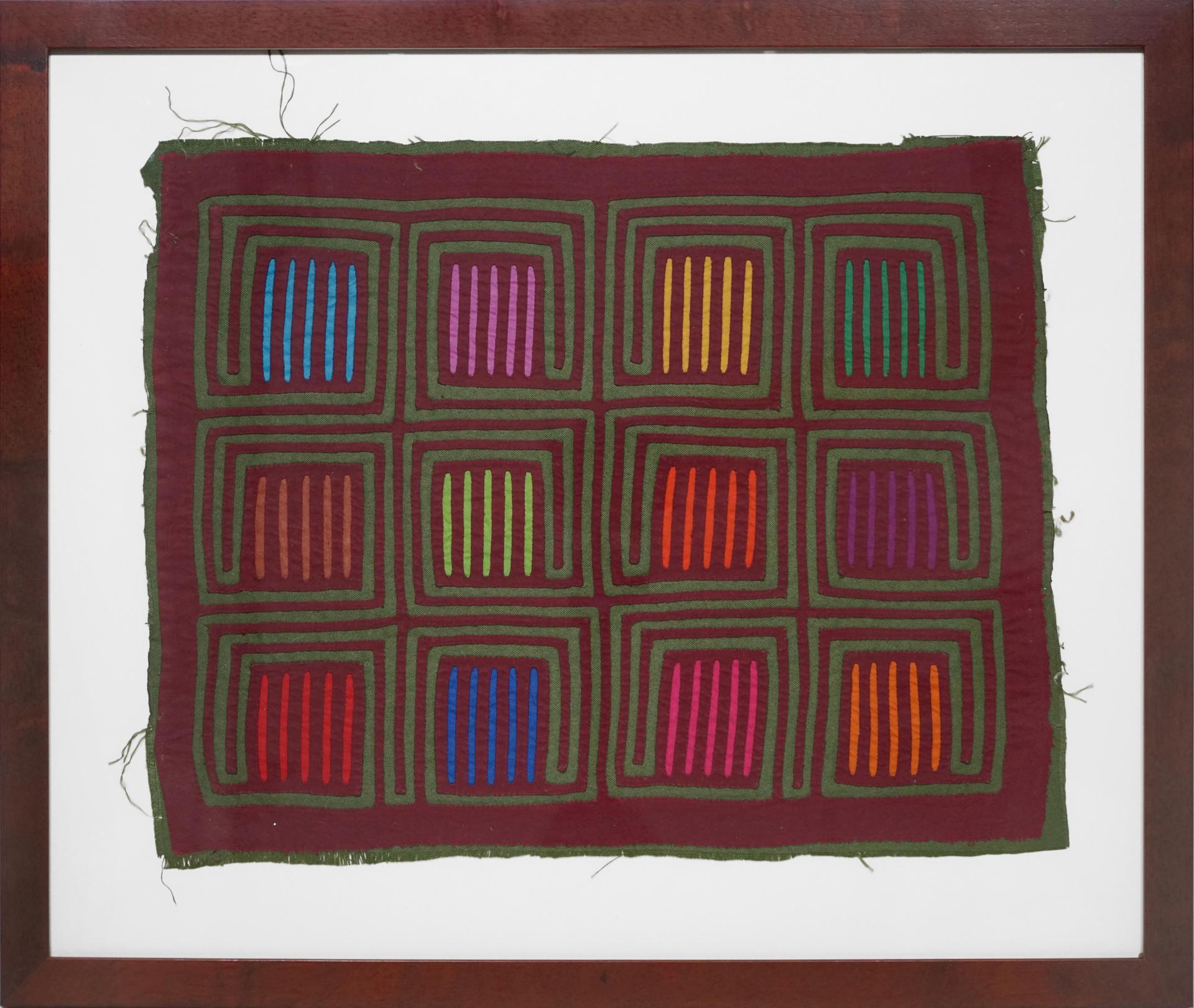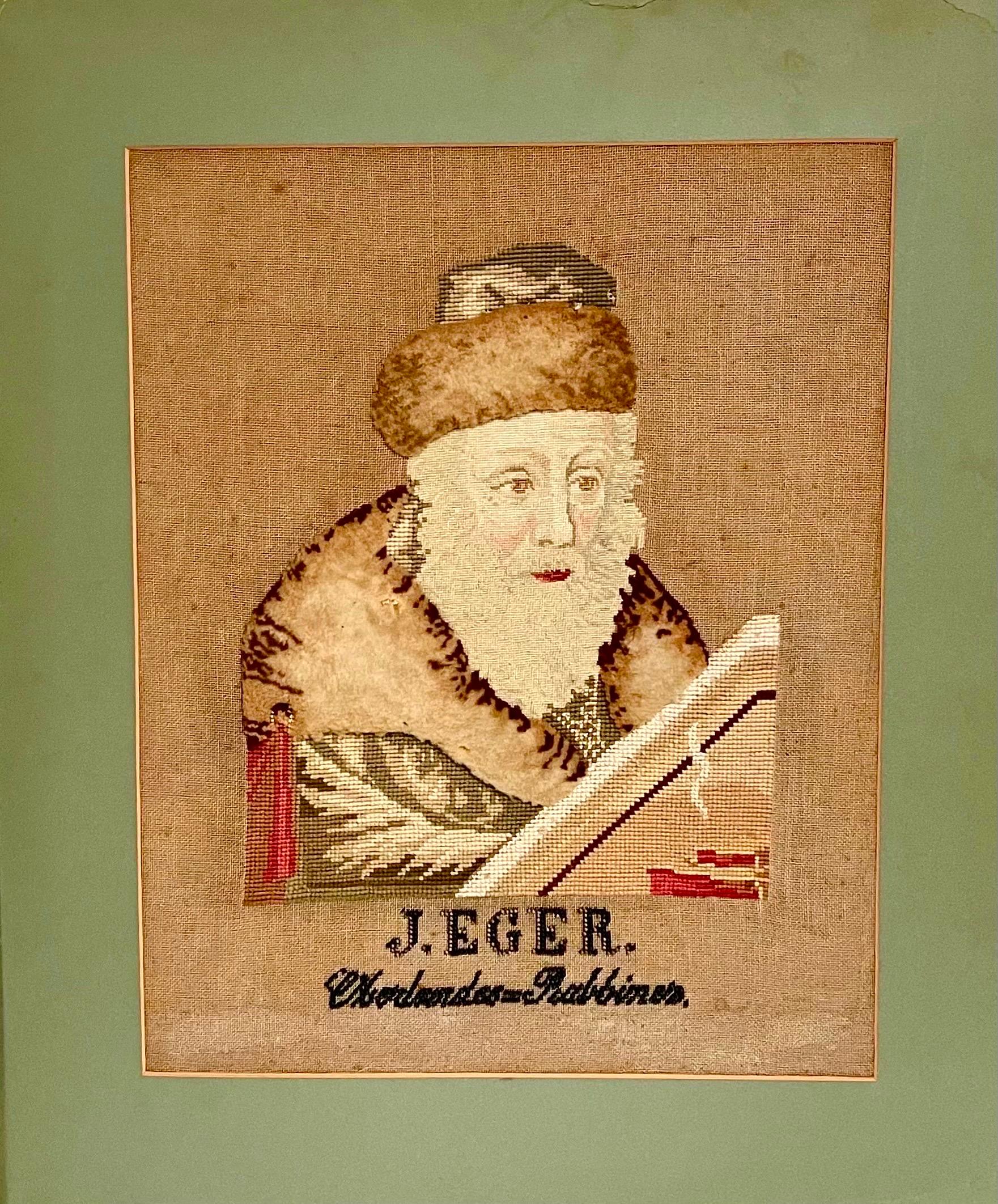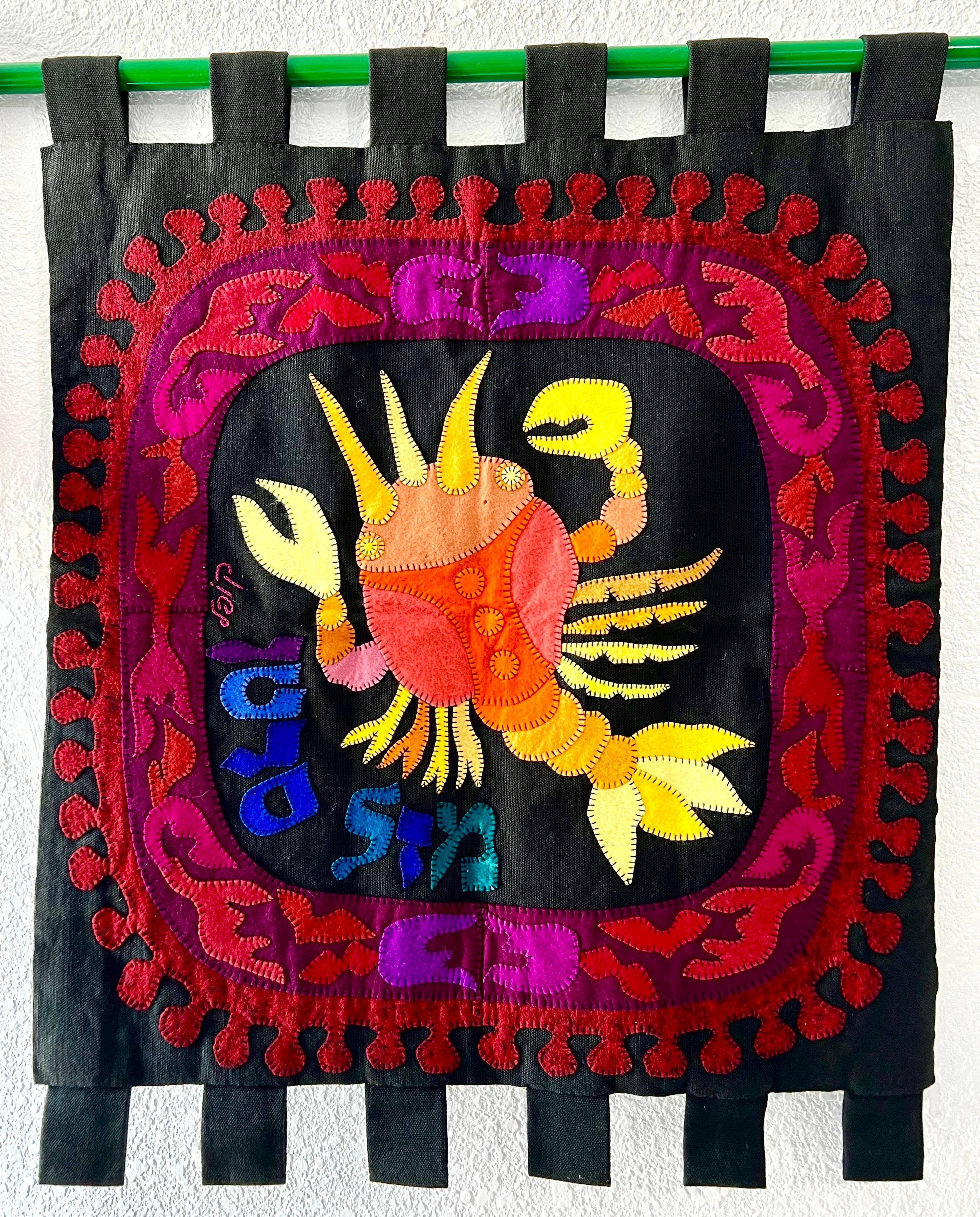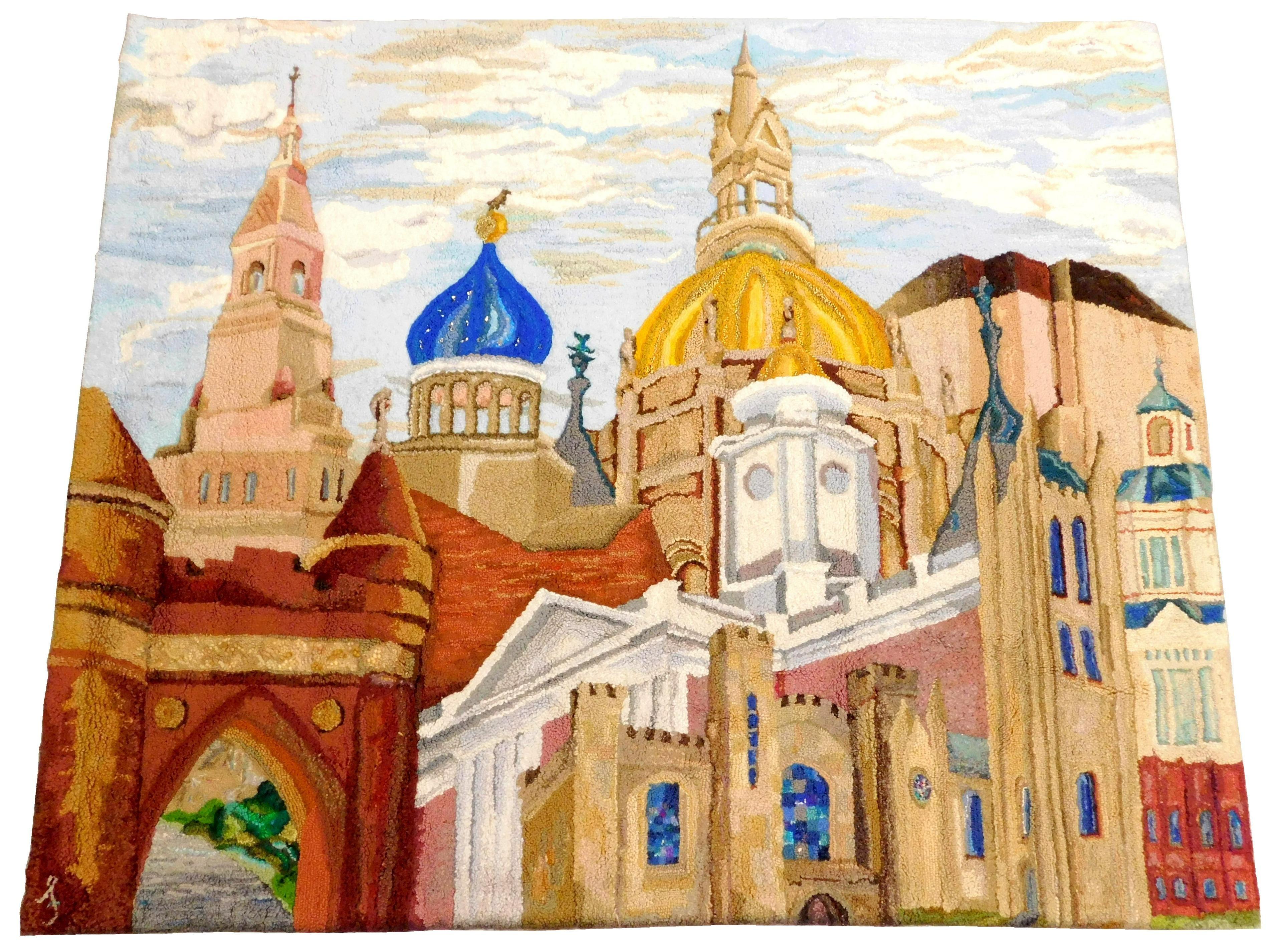Bethan Ash "Windows", Contemporary Quilt2020
2020
About the Item
- Creator:Bethan Ash (British)
- Creation Year:2020
- Dimensions:Height: 32 in (81.28 cm)Width: 47 in (119.38 cm)Depth: 0.5 in (1.27 cm)
- Medium:
- Movement & Style:
- Period:
- Condition:
- Gallery Location:Brecon, GB
- Reference Number:
Bethan Ash
Bethan Ash is a British textile artist, living and working in Neath, South Wales. She is a professional quilt maker and teacher, with a background in fashion design. She has exhibited widely and her work has been bought by museums, in the UK and the USA, including the Museum of Arts and Design, in New York. She is a member of the prestigious International Quilt Art Group. Her work is strongly influenced by social and political culture and she is inspired by urban and natural forms. Mixing a combination of social issues and abstract ideas, Bethan fuses fabrics to make a collage, which is liberating for its freedom and color expression.
- ShippingRetrieving quote...Ships From: Brecon, United Kingdom
- Return PolicyA return for this item may be initiated within 14 days of delivery.
- Vicious, Contemporary QuiltBy Bethan AshLocated in Brecon, PowysThis quilt symbolises addiction and the feelings it induces. Size h 36 x w 48 x d ½ inches. Improvisational cut and fused abstract collage composition that is machine-stitched and q...Category
2010s Folk Art Mixed Media
MaterialsFabric
- The Race 1, Contemporary QuiltBy Bethan AshLocated in Brecon, PowysCollage inspired by Welsh folk tales and the story of Taliesin by Robert Nye. Each panel is full of abstract imagery texture and doodles conveying a dream like language where so many...Category
2010s Folk Art Mixed Media
MaterialsFabric
- The Race 3, Contemporary QuiltBy Bethan AshLocated in Brecon, PowysCollage inspired by Welsh folk tales and the story of Taliesin by Robert Nye. Each panel is full of abstract imagery texture and doodles conveying a dream like language where so many...Category
2010s Folk Art Mixed Media
MaterialsFabric
- Un Dau Tri, Contemporary QuiltBy Bethan AshLocated in Brecon, PowysTriptych of three interacting panels inspired by artist's love of Graffiti as an art form and her interest in the decline and revival of the Welsh language. It is a little-known fact...Category
2010s Folk Art Mixed Media
MaterialsFabric
- Tree Of Life, Contemporary QuiltBy Bethan AshLocated in Brecon, PowysThe inspiration for ’Tree Of Life’ came from a quilt I made for the ‘Quilt Art’ group exhibition ‘Moving On‘. The quilt was called ‘Black Hole’ (Mourning quilt) and describes the fee...Category
2010s Folk Art Mixed Media
MaterialsFabric
- The Race 2, Contemporary QuiltBy Bethan AshLocated in Brecon, PowysCollage inspired by Welsh folk tales and the story of Taliesin by Robert Nye. Each panel is full of abstract imagery texture and doodles conveying a dream like language where so many...Category
2010s Folk Art Mixed Media
MaterialsFabric
- Framed Hmong Appliqué Textile FragmentLocated in Chicago, ILDating to the mid-20th century, this colorful Hmong textile is a classic example of the appliqué technique used for the traditional cloth known as paj n...Category
Mid-20th Century Folk Art More Art
MaterialsTextile
- SAN BLAS ISLANDS PANAMA MOLA Multi-Layered Fabric Handmade Custom Frame Folk ArtLocated in Houston, TXThis is a handmade mola sewn by the San Blas Indian women. Approximate date is 1980. It is framed and protected by conservatorship class. When the gallery f...Category
1980s Folk Art More Art
MaterialsFabric
- Hungarian Rabbi Akiba Eger 19thC Judaica Folk Art Tapestry Needlepoint SamplerLocated in Surfside, FLDimensions board backing is 2 X 18.5 board opening is 16.5 X 13 inches 19th Century framed tapestry of a Rabbi, embroidered sampler, with beaded script below. (it reads J. Eger Oberlandes Rabbiner or Oberlander Rabbiner) There is some sort of texture and dimension to his fur hat (Shtreimel) and coat collar. This is being sold without the frame.. Rabbi Akiba Eger (5521-5598; 1761-1838) Rabbi Akiba Eger was one of the greatest scholars of his time, who had a great influence on Jewish life. He was born in Eisenstadt, Hungary, in the year 5521 (1761), nearly two hundred years ago. The city of his birth was a seat of learning for centuries, and his family was a family of scholars and Rabbis.Rabbi Akiba Eger, who was Rabbi in the famous community of Pressburg (also Hungary, but since 1913 it belonged to Czechoslovakia and was called Bratislava). He was invited to become Rabbi of the famous city of Posen, and in fact became the chief rabbi of the entire Posen province, though he did not carry that title. His famous son-in-law, Rabbi Moshe Sofer (known as the 'Chasam Sofer'), Rabbi of Pressburg, who had married Rabbi Akiba Eger's daughter. King Frederick III of Prussia honored him with a special medal. Rabbi Akiba Eger was recognized as a great authority on Jewish law, and many well known rabbis and Jewish leaders turned to him for advice and decisions on points of law. "This sort of art, craft work, emerges from a long tradition of Jewish folk art...Category
Early 1900s Folk Art More Art
MaterialsWool, Mixed Media, Thread
- Wool Felt Applique Israeli Folk Art Signed Tapestry Kopel Gurwin Bezalel SchoolBy Kopel GurwinLocated in Surfside, FLThis depicts a Crab, In Hebrew Mazel Sartan (the Zodiac symbol Cancer, June-July) all made by hand. woven and stitched. Kopel Gurwin (Hebrew: קופל גורבין) (1923–1990) was an Israeli tapestry wall hanging, painter and graphic artist. Kopel (Kopke') Gurwin (Gurwitz) was born and raised in Vilna, the capital of Lithuania. He spoke Yiddish at home, but simultaneously studied Hebrew at their school which was part of the Tarbut educational network. Kopel was active in the Hashomer Hatzair youth movement. In the 1930s, as a teenager, Kopel helped his parents with the home finances by working in a suit workshop, there he first encountered the art of sewing. With the outbreak of the Second World War and the German invasion of Vilna, the Jews were imprisoned in camps and ghettos. Kopel and his brother Moshe were separated from their parents and were put to work in coal mines and peat. Kopel's parents were taken to the Stutthof Nazi concentration camp where they died of typhus within a month of each other. Kopel's 12-year-old sister Chava was turned over to the Germans by a Polish family and murdered. The brothers were arrested by the Germans, but were saved thanks to the connections of Nina Gerstein, Kopel's drama teacher. They hid in an attic until they were discovered, fled and moved to Riga, where they were caught and sent to the Stutthof concentration camp where they were imprisoned until the end of the war. They were put to work maintaining and cleaning trains and took part in one of the death marches. In July 1946, Kopel and Moshe sailed to Helsingborg, Sweden, as part of operation "Folke Bernadotte", in which Sweden took in ill survivors for rehabilitation. Once he recovered, Kopel worked in a publishing house and later was appointed director of the local branch of the Halutz movement. In 1950 Kopel and Moshe made aliyah to Israel. Kopel worked as a survey for the Survey of Israel Company. In 1951, he enlisted to the Communication Corps and served as a military draftsman. There he won first prize for the design of the front cover of the Communication Corps bulletin. With his discharge from the army at 29 he started studying drawing and graphics at the Bezalel Academy of Arts and Design in Jerusalem. Among his teachers were Isidor Ascheim, Shlomo Vitkin, Yossi Stern and Jacob Steinhardt. At the end of his first year of study, Kopel won the Reuben and Sarah Lif Excellence Award in written studies. During his studies he also won additional prizes: In 1956 he won first prize from the Lethem Foundation in California for poster design. Later the same year, Kopel won the Hermann Struck prize for his drawing on the theme of Jerusalem. In 1957 he won an additional first prize from the Lethem Foundation and second place from the printing company Ortzel for a drawing for a Jewish New Year greeting card. In 1958 he won first prize in a competition to design a poster for Tel Aviv's jubilee. Two years later he won three other awards: First and third prize for designing a poster for Israel Independence Day, celebrating 12 years of the State of Israel. Also that year Kopel won first prize for a poster to mark the 25th Zionist Congress. In 1964 he entered the Independence Day poster competition on the theme of aliyah and won first and second prize. Four years later he again entered the competition on the theme of 20 years of Israel's independence and won first prize. The poster was styled like a Holy Ark curtain with two lions and a menorah at its centre. This poster appeared on the cover of the famous book Jewish Art and Civilization, edited by Geoffrey Wigoder as well as the record Voices of 20 Years, 1948-1968, edited by Yossi Godard. In April 1971 he won first prize in the Independence Day poster competition for the fourth time. Kopel's Folk Art tapestry won the Israeli Independence Day Poster Contest in 1968 With the completion of his studies at Bezalel Kopel moved to Tel Aviv and was hired by Shmuel Grundman's graphics and design studio. Grundman took him to Europe with him to design and supervise the construction of Israeli exhibition pavilions. During his time at Grundman's he discovered the fibrous felt from which he produced most of his wall hangings. At the 1964 Levant Fair exhibition he used felt stuck onto wooden panels for the first time. The first felt wall hanging that Kopel produced was intended for the American Cultural Centre in Jerusalem and its theme was the United States Declaration of Independence. The wall hanging, which measured 2.85 X 1.85 meters, was stuck on a wooden panel. Kopel ordered rolls of felt from France and began work on wall hangings based on bible stories. He used a needle, hand sewing small even stitches with black embroidery thread which framed and highlighted every detail in the work, as well as using appliqué. The interior designer, Alufa Koljer-Elem, introduced him to Ruth Dayan who managed the shop Maskit in September 1967 he opened his first solo exhibition at the Maskit 6 gallery, in which 12 wall hangings were displayed. In light of the exhibition at Maskit 6, Meira Gera, the director of artistic activity at the America-Israel Cultural Foundation, organized an additional exhibition of his works at the foundation's exhibition hall in New York City. The exhibition sparked immense press interest, and was also displayed for a few months at the New York Jewish Museum, from where it travelled throughout the United States. Followed by the exhibition at the Delson-Richter gallery in Old Jaffa, which was later also exhibited at the Jerusalem Theatre. Kopel's tapestry "The Time for Singing has Arrived" was printed on a UNICEF greeting card in 1978 and again in 1981. The Israeli Philatelic Service issued three stamps based on three of Kopel's holy ark curtains and one stamp based on an Independence Day poster he designed. Kopel's creations decorate a large number of synagogues, public buildings, hotels and private collections which were purchased in Israel and around the world. They have decorated, among others, the walls of the King David...Category
20th Century Folk Art Mixed Media
MaterialsWool, Felt
- Large Americana Folk Art Pictorial Hooked Rug Wool Wall Hanging TapestryBy Trudi ShippenbergLocated in Surfside, FL"Downtown Hartford" Hooked rug tapestry, various landmark buildings in Hartford, Connecticut, congregate within composition, including capital building, Colt building, Wadsworth Mus...Category
20th Century Folk Art Mixed Media
MaterialsFabric, Wool
- Large Americana Folk Art Pictorial Hooked Rug Wool Wall Hanging TapestryBy Trudi ShippenbergLocated in Surfside, FL"RFD Courant", hooked rug tapestry, rural community with country homes and buildings throughout rolling hills, lush green trees with three-dimensional leaves frame the scene, in the...Category
20th Century Folk Art Mixed Media
MaterialsFabric, Wool






